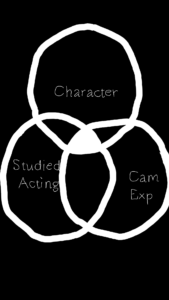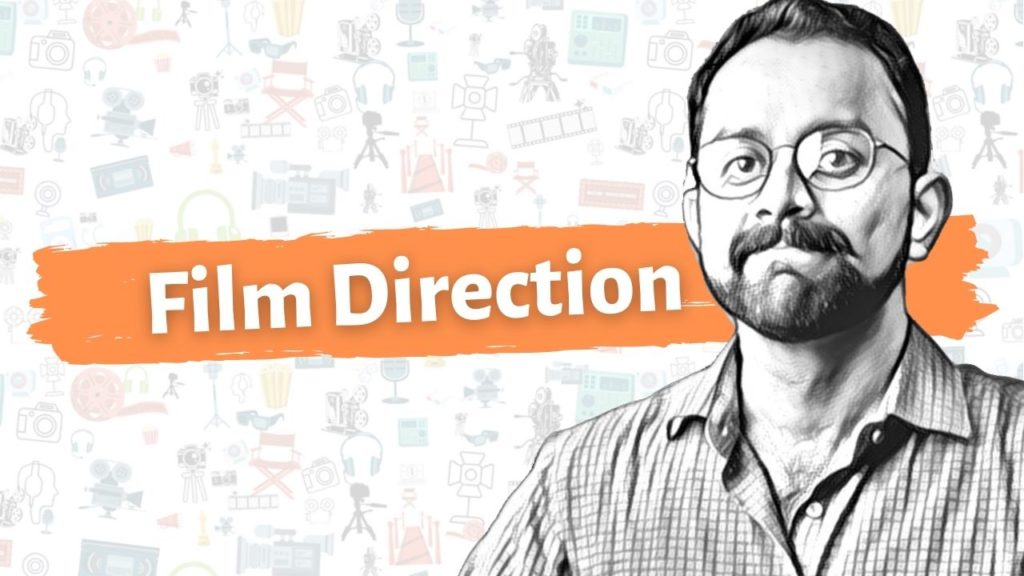There was a funny scene in an old Malayalam film where the character played by Sreenivasan pretends to be a film director, when he knows nothing about how to direct a film. The cameraman bombards him with questions on lighting, storyboard and so on. He stumbles around not knowing what to do. So when the cameraman asks where to place the camera when the actress jumps into the pool, Sreenivasan’s character innocently asks the camera also to jump into the pool with the actress. This might not seem funny now, in the days of GoPros, but the scene quite accurately depicts the early days when I went to direct a film.
When I went to Direct a Film
My crew then was nobody, but my parents, relatives, and friends, people whom I had known well for a long time. We went to the first location, and everyone crowded around me to hear the story. No one knew what the story was exactly. So I took out the script, to read it out loud to everyone. I looked at the print on the paper, but all I could see were black dots. I was so scared that I could not see anything. That day I suffered. I knew then what the character played by Sreenivasan would have been going through when he was on set for the first time. You too will. All I hope to do is to help you learn from my stupidities.
Film direction is an art. It isn’t just one art but is made of 36 arts. At least that is what I once heard from the famous Indian Film Director Subhash Ghai at the International Film Festival of India that happens in Goa. I still don’t know which all these 36 art forms are, but people are now making films even on their phones (In case you haven’t been here long, I’m talking about myself. We shot my debut feature film, Munnariv (2020), entirely on an iPhone).
Maybe you will never learn all these 36 arts and finally, make your films. Maybe you will. Here are 4 very basic things you need to know to direct a film.
You Need an Engaging Script to Direct an Engaging Film
You need a script that can hold people’s attention till the very end, keeping them at the edge of their seats. While reading the Indian epic Ramayana, you are always wondering if Ram will ever get Sita back from the evil Ravanan who had stolen her away.

“Drama is anticipation mingled with uncertainty.” ― William Archer
That is, we hope such and such will happen, but we are unsure if it will. Ram has on his side just is brother Laxman and some arrows, while Ravan is the lord of Lanks, an entire nation, with battalions of soldiers. Ravan himself is called Ravan with Ten Heads. Even though we hope that these two humble characters will succeed against such stiff opposition to save Sita, we won’t know for certain until the very end of the story. That is anticipation with uncertainty. Every story that holds your attention till the end will have such an element. For more on this, I will recommend a book later in this article.
Casting the Right Actors in the Right Part
The second important thing you need to know to direct a film is how to cast actors correctly. Many think the director’s job is just to go on set and call “Start, Action, Cut!” Far from it. One of the most important jobs of a director is casting the right actors for the right parts.
Everyone can easily spot bad acting. So finding actors who can act is a no brainer, but many a time overlooked by amateur filmmakers. They not only need to know how to act but specifically how to act in front of a camera.
“Theater acting is an operation with a scalpel, movie acting is an operation with a laser” — Michael Caine
Just as it takes a lot to stand in front of an audience and perform, it takes a lot of practice acting in front of a camera to be able to live in front of the camera. Thus one of the important things you need to know to make your film is to know to cast the right actors for the right parts. We talked more about this in our blog on 4 Things to know on How to Make a Short Film.

How the Crew Helps You Direct a Film
The third thing you need to direct your film is a crew that is in sync with you and your vision. Among the crew members, the most important are ones are going to be the
- Cinematographer
- Sound and
- Editor
It is through the hands of these three that an audience will be seeing your story. The better you can communicate with each other, the better are the chances of your vision coming well on screen.
When I was doing my first films, I had to do the camera, sound, editing and direction myself. I was rolling the sound recorder and running to the camera to start it for each take. When you are starting, you will end up doing a lot of these jobs yourself. This is good because by doing so you are making experiences in all the departments.
Following are things to consider when choosing a crew:
- Do they know the job well?
- Do you communicate among yourselves well?
- Do they trust you? Do you trust them? Trust in your vision plays an important role especially when you are making a low budget film.
Basic Understanding of the Film Language
The fourth thing you need to know to direct a film is knowledge about Film Direction itself. As a director, you are not directing the camera and actors to do this and that. The thing that you are directing is the audience’s attention.
You need to study the film language to be able to direct an audience’s attention. This includes things such as knowing the following:
- various shot types
- how editing works
- if an actor is good or not
- what good storytelling feels like and so on
The easiest way to learn all this is by watching films, which if you are reading this you probably have been doing so since you can remember. You already know a lot of the language of film,
As promised before, here is the book that will help you bring that understanding to the forefront, On Filmmaking by Alexander Mackendrick. In this book, I found answers to a lot of the questions that I had on directing film. There is also a documentary on which the book was based on. You can watch it on YouTube.
Learning by Making Film After Film
Then you learn by repeatedly making one film after another, each time developing your skill in all the various arts that constitute a film. The world-renowned filmmaker Akira Kurosawa started his film journey as an Assistant Director (AD). He worked as an AD for many years in various departments, before he got promoted to be a Director. In those days that was the norm. It was a good system. But today anyone can make a film without knowing much of any of the various arts in filmmaking.
This was the question that I had when I started. I wanted to make as many films as was possible for the least amount of money and time so that I can go through as many iterations as to learn the various departments quickly. The culmination of all that was when we made Munnariv on an iPhone for just $8000. It is my learnings from these years that I’ve written in the book The Indian Indie Film (Make Your Film for the rest of the world). By learning from my mistakes, I believe this book will help you save time in your filmmaking journey.
You Shall Stumble Too
When I had gone with my family and friends to make my short film, when I realised I was so scared that I couldn’t see anything in the script, I asked my friend who was beside me to narrate the story, while I moved way back into the crowd. Standing in the crowd were my parents who had come to see their son who was aspiring to become a great film director one day, and there I was on my set, being unable to even make a sound.
It took some time for my breathing to became normal and to find my voice again. I finally came back into the middle of the gathering and started narrating. Even though I was dead scared at the beginning that day, we shot everything according to our plan. From there I started telling stories. I made 10 shorts, assisted 2 feature films, various Ads, my feature film, currently scripting for the second film. All this began with the first short films I made back then.
Start wherever you are. If I can, you definitely can.
Hey Aspiring Filmmaker,
I debuted my film career making a feature film for ₹5 lakhs ($7,000) on an iPhone. I’d like to help you do the same. So I wrote everything I learned into a book. It is now available on Amazon, called The Indian Indie Film (or Make Your Film for rest of the world). Enjoy!





